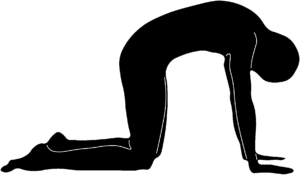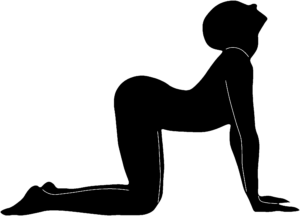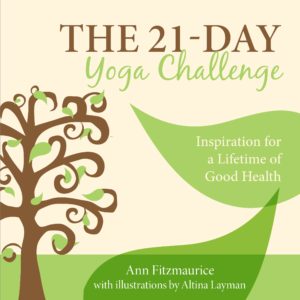21-Day Yoga Challenge to Release, Restore & Rebalance
Day 17: Seated Marjariasana and Bitilasana ~ Seated Cat and Cow
Cat and Cow (Click to see the video and thank you Jeri Rowe for being our model today!)
The Pose: Cat and Cow pose flexes and extends the spine — another vital movement for the health of the spine. As a restorative offering, this pose done seated makes it accessible anytime during the day – including when you travel – and helps you release tension as you restore balance to your body.
How To: Sit mid-way on the chair seat so your back has plenty of room to round in cat pose. Your thighs are parallel and your ankles are directly under your knees with your feet firm to the floor and pointed forward. Place your palms to your thighs and let your spine be long, shoulder blades drawn down and the crown of your head reaches upward.
Practice four to five rounds of inhale, pause your breath and exhale. Begin with cow pose by taking an inhale to open your chest, broaden your collar bones and extend your spine (this takes your spine into anterior tilt). With your exhale, begin rounding your back until your head gently turns downward (this takes your spine into posterior tilt).
Tips: To enhance your mindful approach to this practice and ensure that you pay attention to each part of your vertebra, begin both the extension (cow) and flexion (cat) from the bottom of your spine at the tailbone and mindfully travel up the vertebra to the crown of your head. Allow for the head to be the last part to bring in and out of the pose.
Close your eyes as you move back and forth to soften the practice and draw yourself inward to add to your relaxation.
Benefits: Cat and Cow pose is a part of many yoga classes because it is essential for you to warm up the spine in flexion and extension before moving on to other postures. This pose is beneficial for relieving tension, especially in the trapezius where many of us hold a lot of stress.
It is an excellent pose to practice prior to forward folding as the anterior movement in cow pose allows for your hip points to move toward your thighbones, deepening the flexion in the hips to direct the pelvis to turn over the hips. A good thought to reiterate in tomorrow’s offering!



